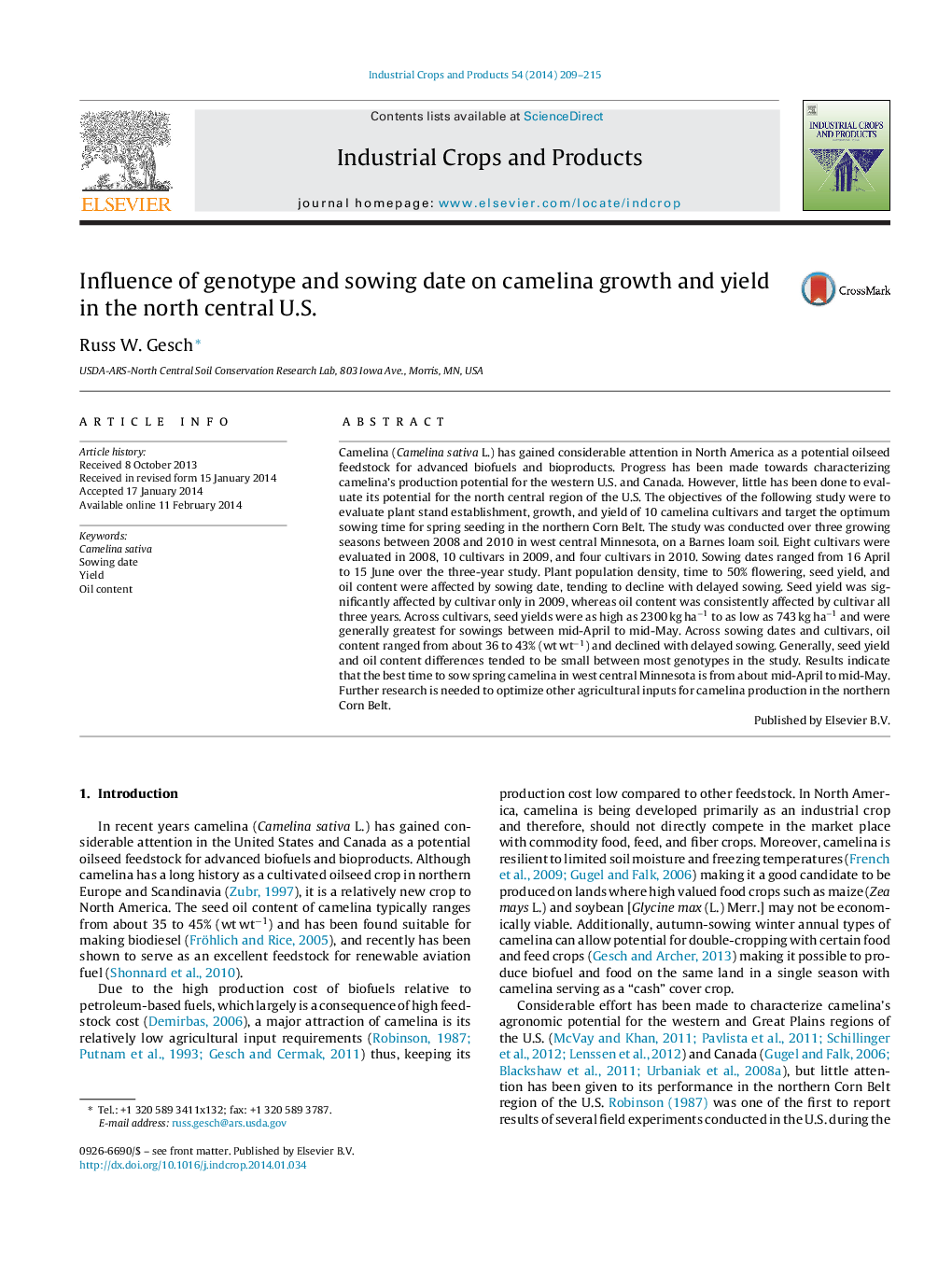| کد مقاله | کد نشریه | سال انتشار | مقاله انگلیسی | نسخه تمام متن |
|---|---|---|---|---|
| 4513389 | 1624855 | 2014 | 7 صفحه PDF | دانلود رایگان |
• The effect of genotype and sowing date on camelina was assessed over three years.
• Seed yield, oil content, plant population, and growth were affected by sowing date.
• Differences in yield and oil content amongst most cultivars were generally small.
• Mid-April to mid-May was found to be the optimum time to sow spring camelina.
Camelina (Camelina sativa L.) has gained considerable attention in North America as a potential oilseed feedstock for advanced biofuels and bioproducts. Progress has been made towards characterizing camelina's production potential for the western U.S. and Canada. However, little has been done to evaluate its potential for the north central region of the U.S. The objectives of the following study were to evaluate plant stand establishment, growth, and yield of 10 camelina cultivars and target the optimum sowing time for spring seeding in the northern Corn Belt. The study was conducted over three growing seasons between 2008 and 2010 in west central Minnesota, on a Barnes loam soil. Eight cultivars were evaluated in 2008, 10 cultivars in 2009, and four cultivars in 2010. Sowing dates ranged from 16 April to 15 June over the three-year study. Plant population density, time to 50% flowering, seed yield, and oil content were affected by sowing date, tending to decline with delayed sowing. Seed yield was significantly affected by cultivar only in 2009, whereas oil content was consistently affected by cultivar all three years. Across cultivars, seed yields were as high as 2300 kg ha−1 to as low as 743 kg ha−1 and were generally greatest for sowings between mid-April to mid-May. Across sowing dates and cultivars, oil content ranged from about 36 to 43% (wt wt−1) and declined with delayed sowing. Generally, seed yield and oil content differences tended to be small between most genotypes in the study. Results indicate that the best time to sow spring camelina in west central Minnesota is from about mid-April to mid-May. Further research is needed to optimize other agricultural inputs for camelina production in the northern Corn Belt.
Journal: Industrial Crops and Products - Volume 54, March 2014, Pages 209–215
